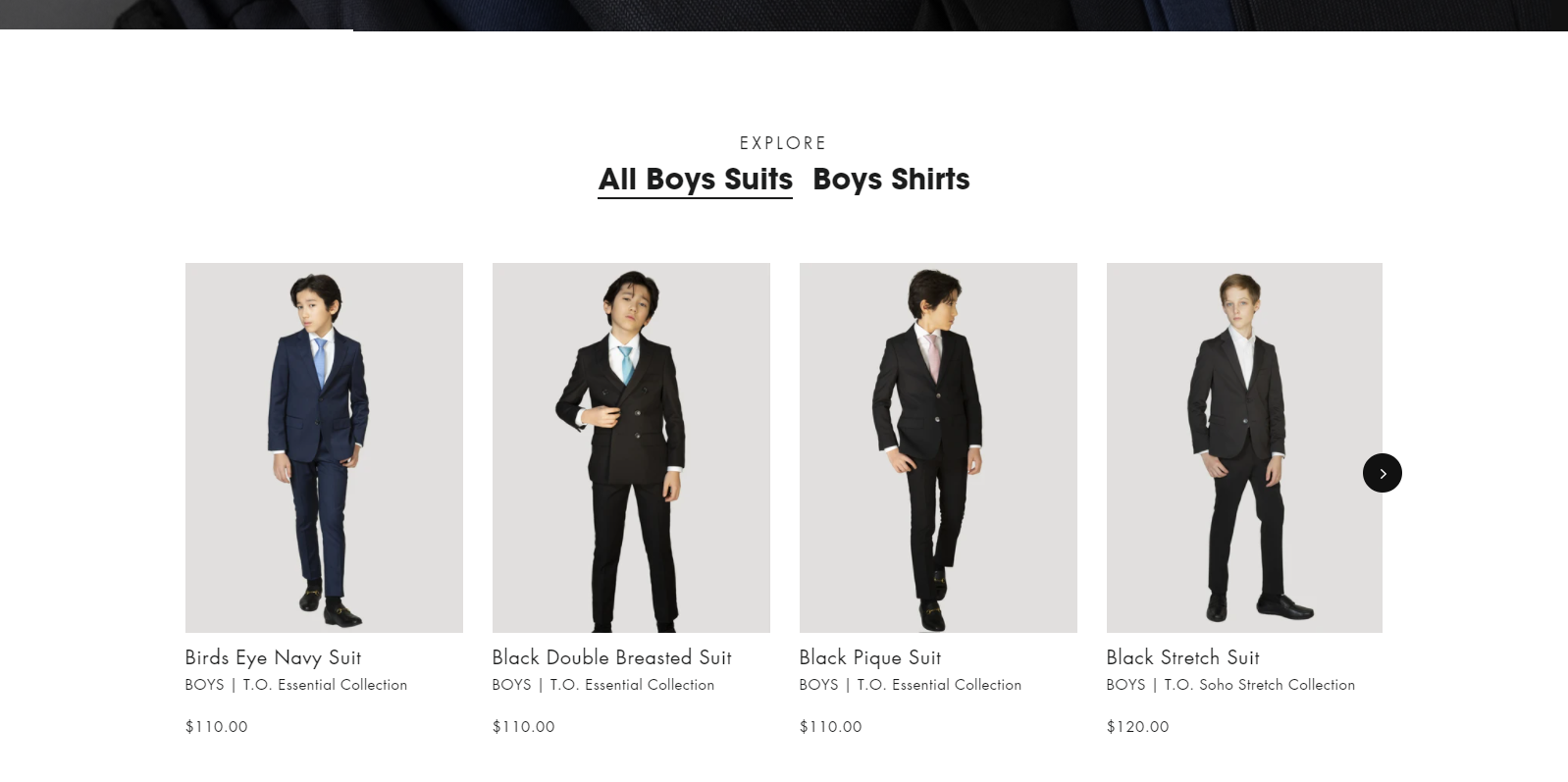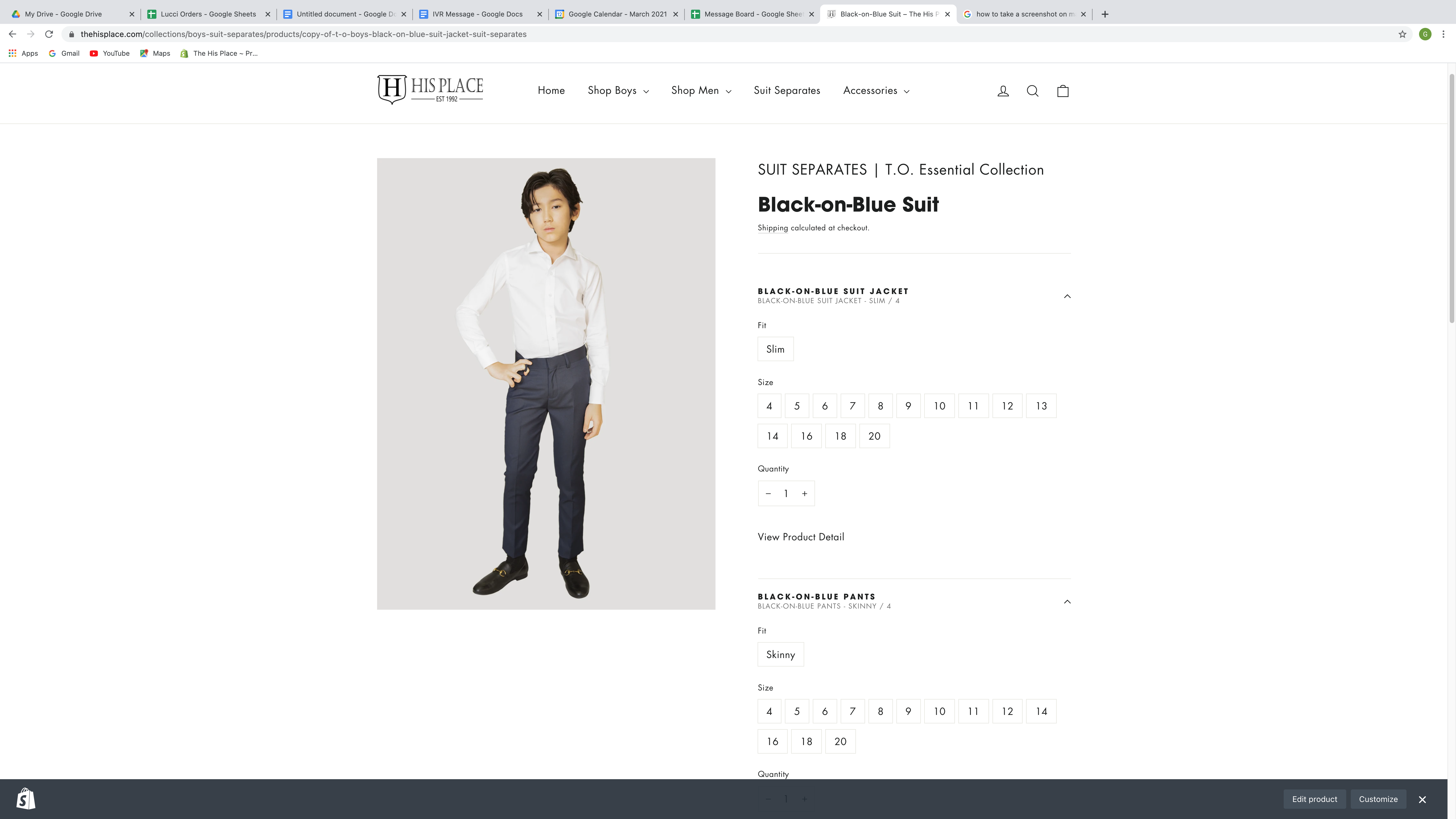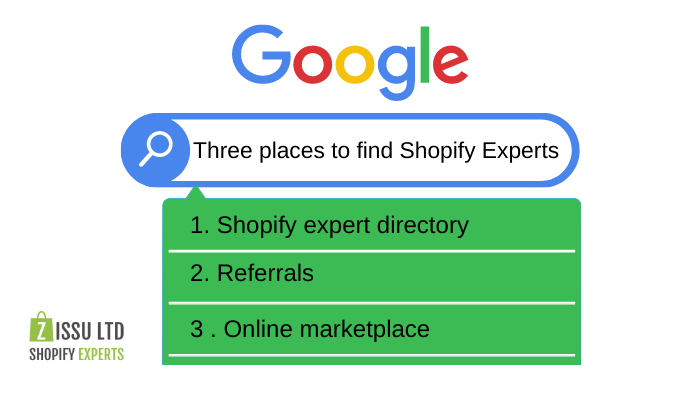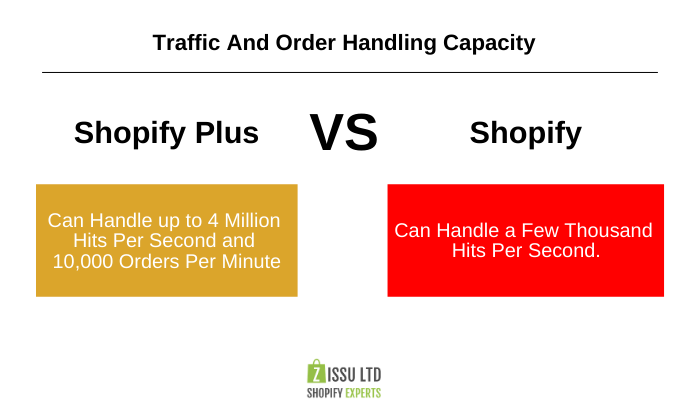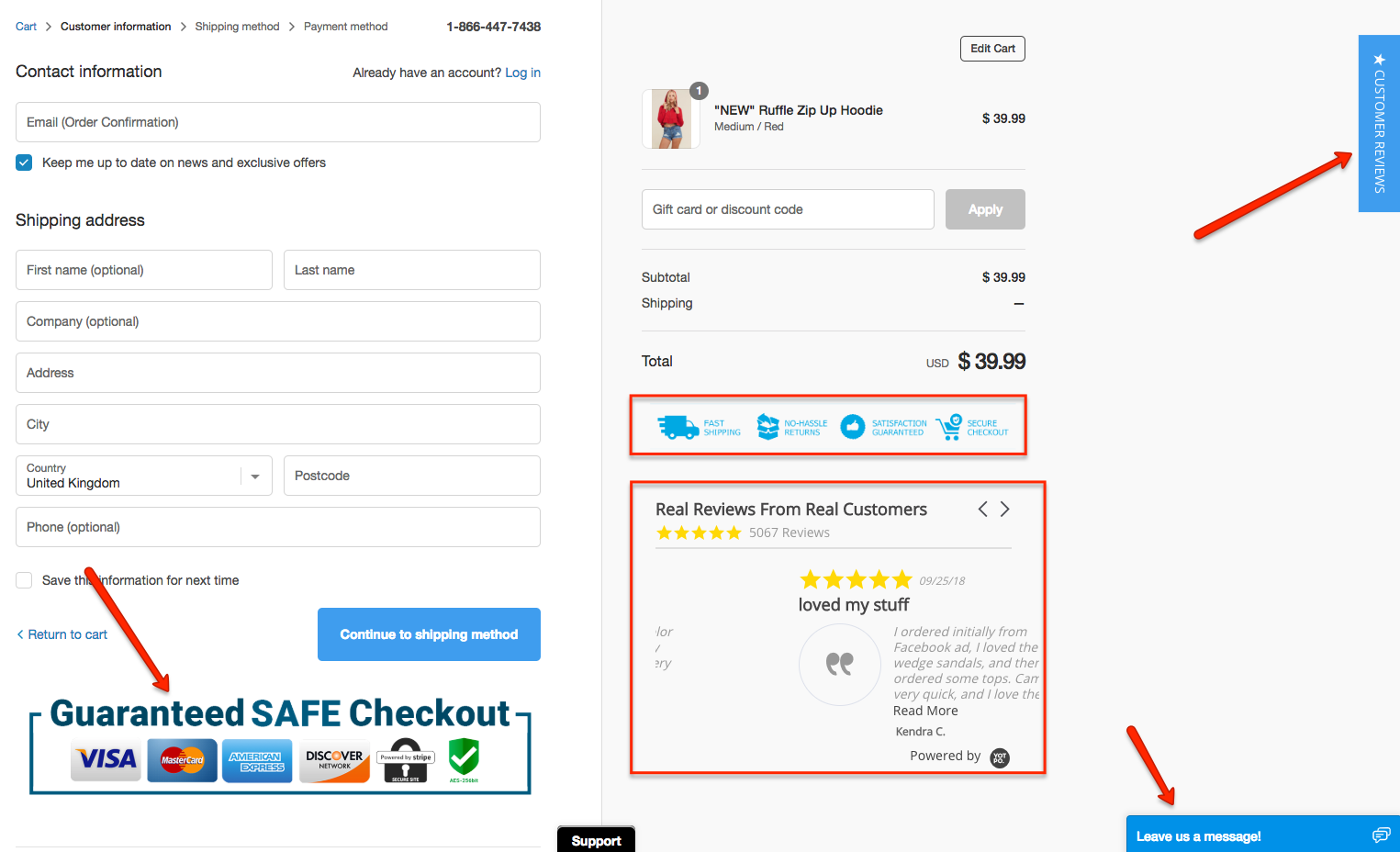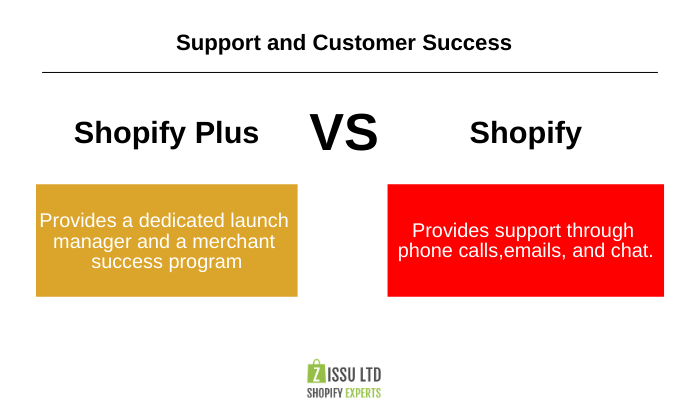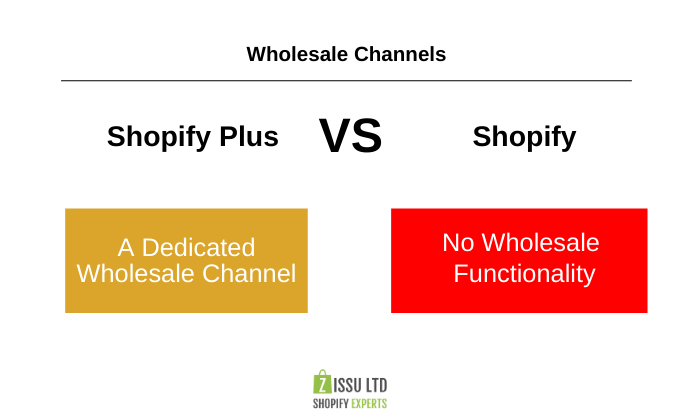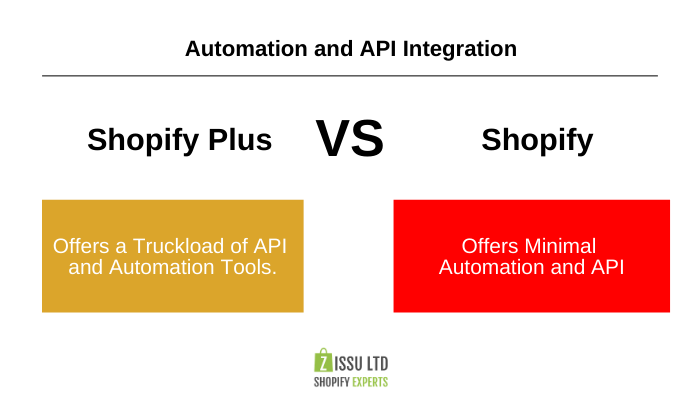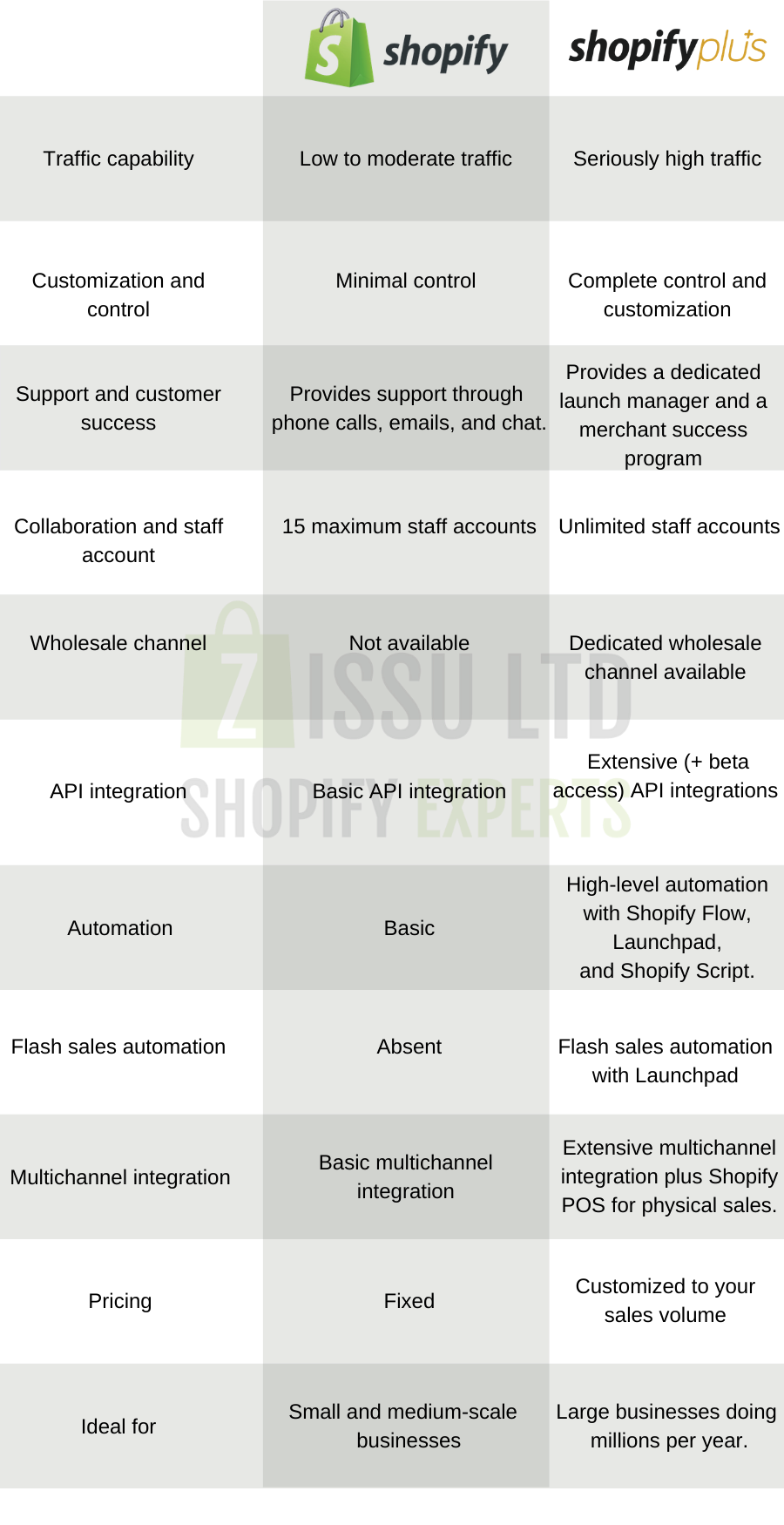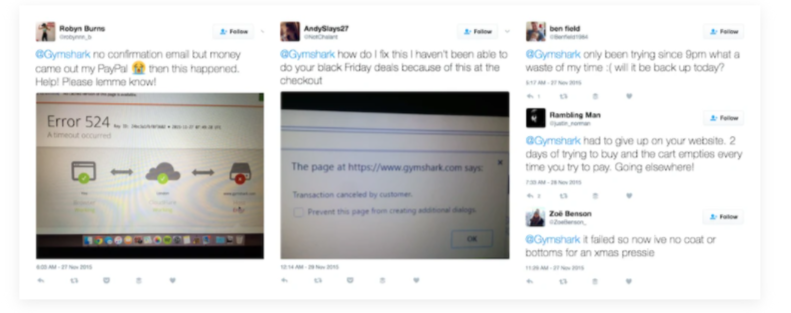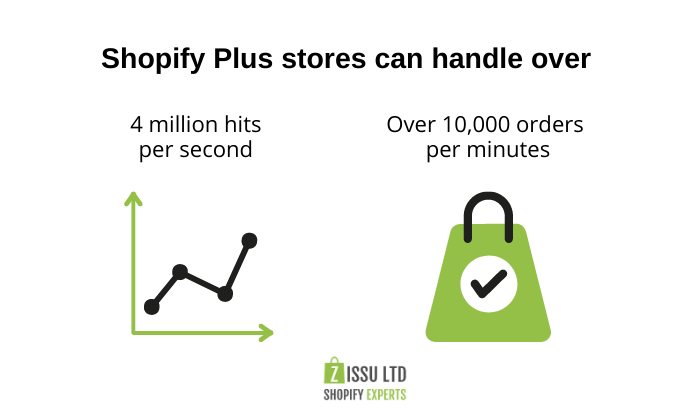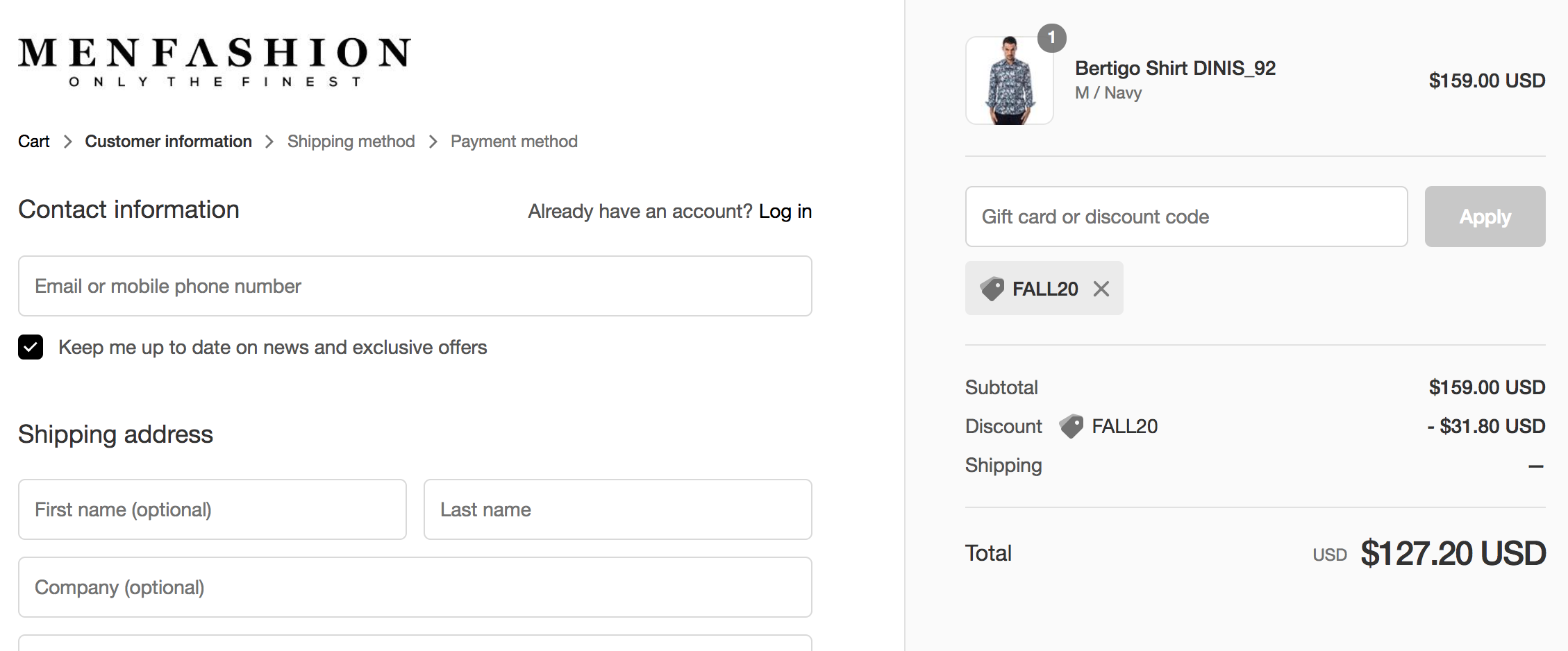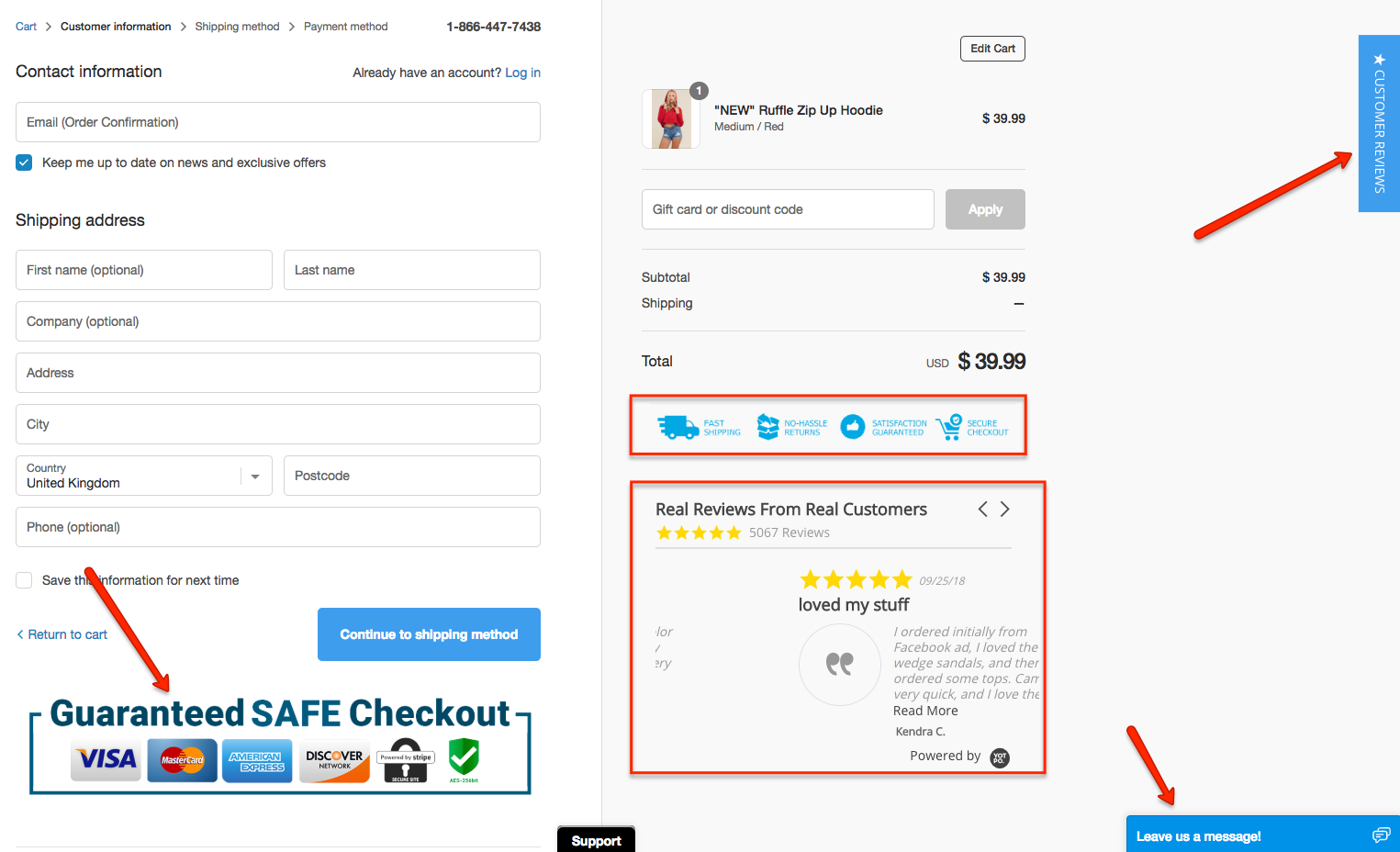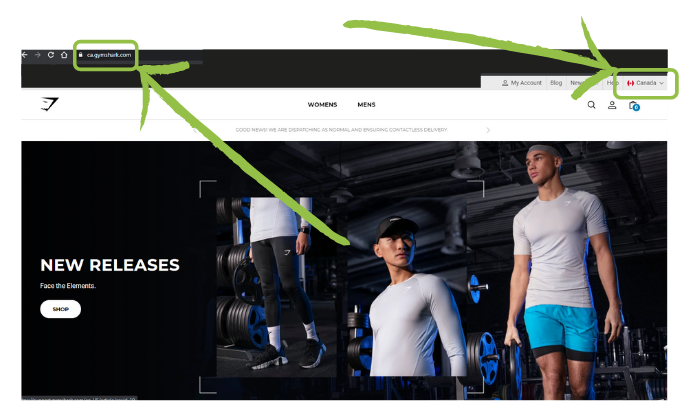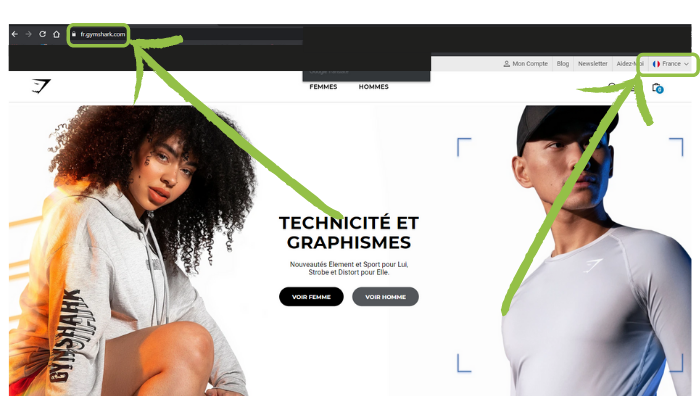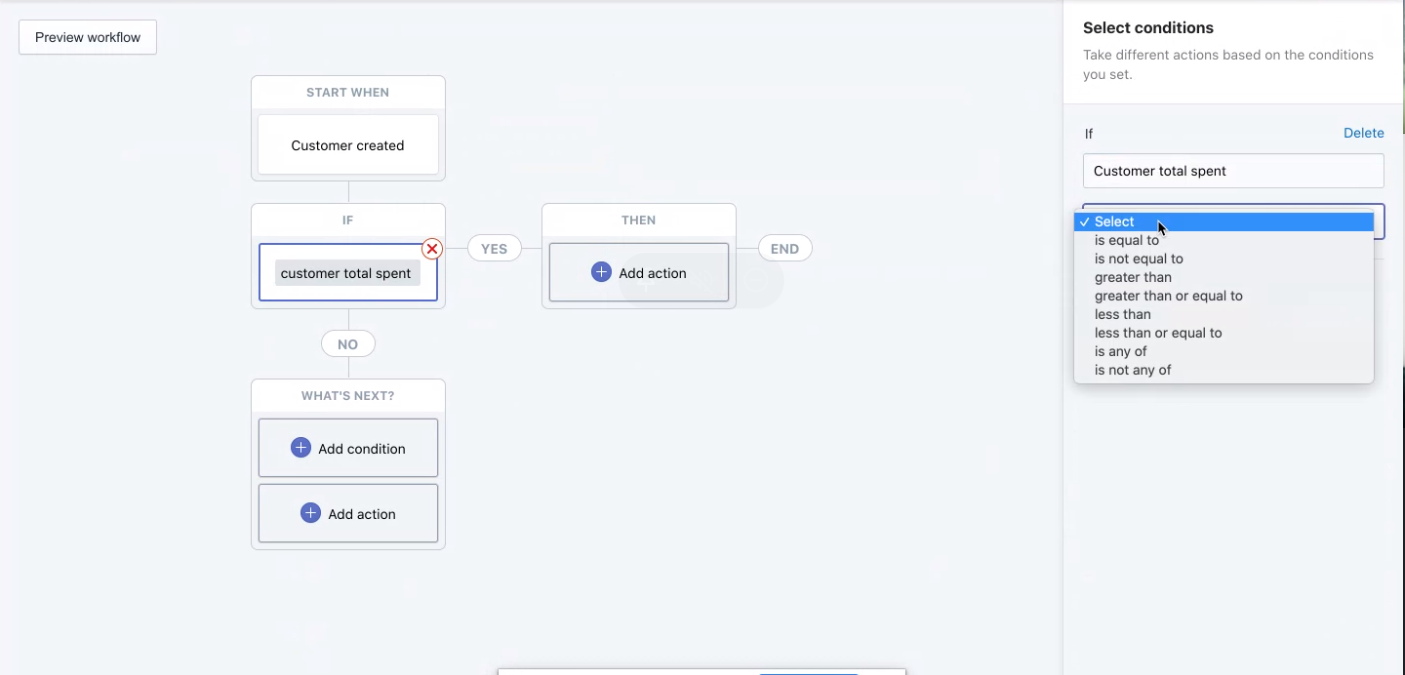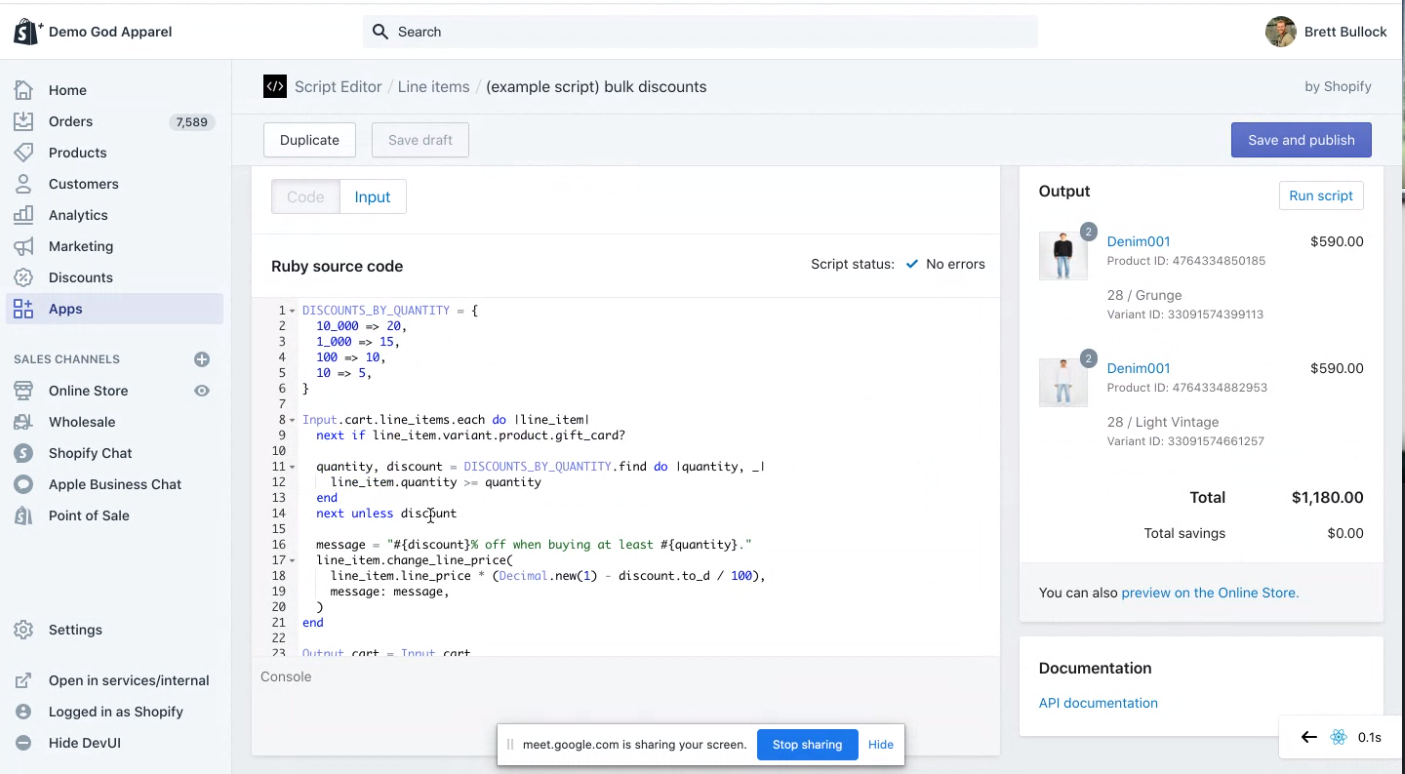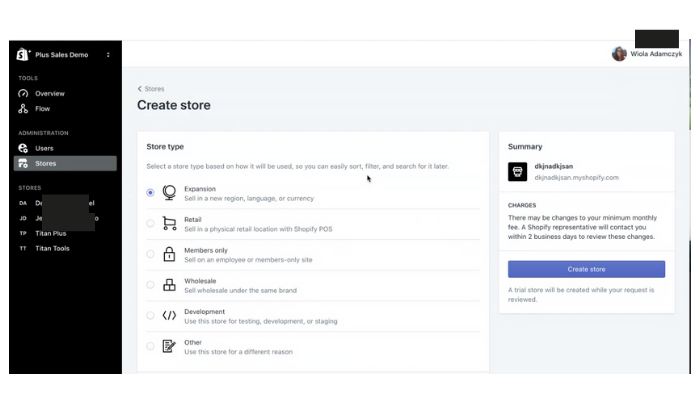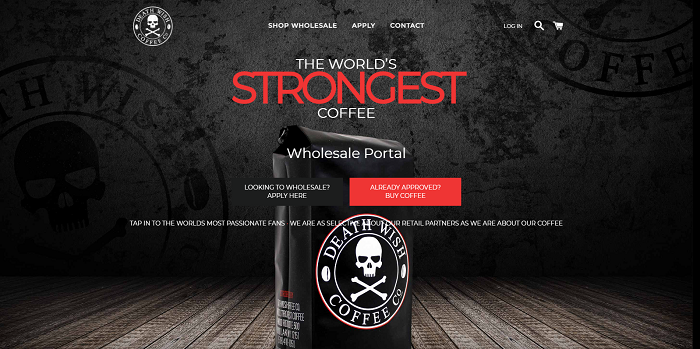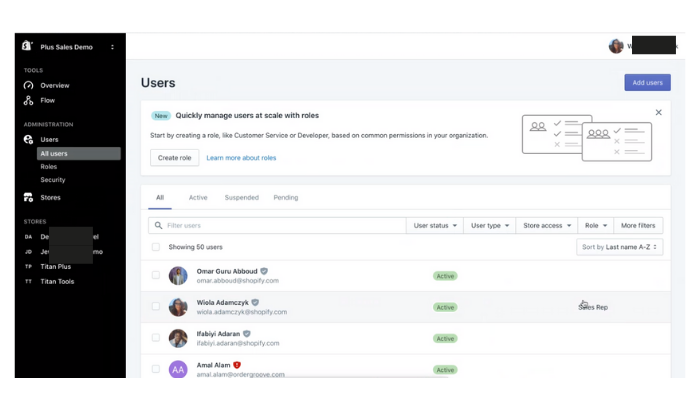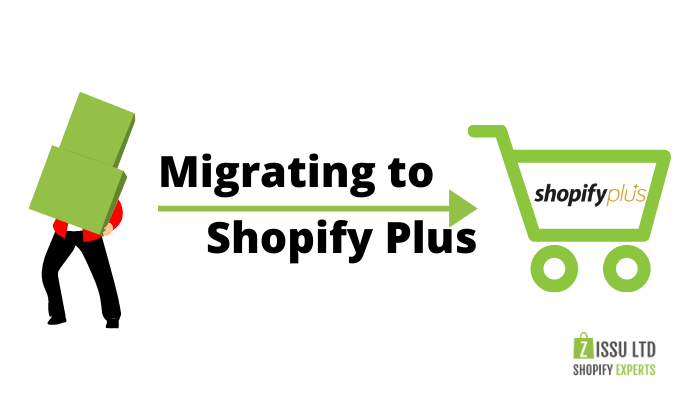Best CRO Strategies for Shopify Plus: Boosting Conversion Rates and Revenue
In this blog post, we will explore the best CRO (Conversion Rate Optimization) strategies for Shopify Plus, an enterprise-level eCommerce platform, to help online businesses boost their conversion rates and increase revenue. We will delve into proven techniques, industry insights, and expert advice to empower your eCommerce store to reach new heights.
Understanding the Importance of CRO for Shopify Plus
In today's competitive e-commerce landscape, having a visually appealing website and high-quality products is not enough to guarantee success. Conversion rate optimization (CRO) has become a crucial aspect of any successful online store, and Shopify Plus is no exception. CRO refers to the process of improving the user experience on your website to increase the percentage of visitors who take desired actions, such as making a purchase or signing up for a newsletter.
By implementing effective CRO strategies, Shopify Plus merchants can increase their conversion rates and revenue, ultimately leading to long-term success. Understanding the importance of CRO is essential for any merchant looking to optimize their online store's performance and reach their business goals.
CRO is all about understanding your customers, their needs and preferences, and providing them with a seamless shopping experience. It involves analyzing your website's performance and identifying areas where improvements can be made to boost engagement and drive conversions. By optimizing your website's design, layout, and functionality, you can make it easier for customers to find what they're looking for and make a purchase.
In addition to driving sales, CRO can also help improve customer satisfaction and loyalty. By providing a seamless shopping experience, customers are more likely to return to your store and recommend it to others. Effective CRO strategies can also help reduce cart abandonment rates and increase the average order value, leading to increased revenue and profitability.

A graph showcasing the correlation between CRO efforts and revenue growth in Shopify Plus stores
Leveraging High-Quality Product Imagery: Is a Picture Really Worth a Thousand Words?
When it comes to selling products online, high-quality product imagery can make all the difference. In fact, studies show that product images have a significant impact on a customer's decision to buy. This is especially true for e-commerce businesses, where customers cannot physically touch or see products in person.
With Shopify Plus, merchants have the ability to showcase their products through high-quality, visually appealing imagery. This includes using multiple images to show different angles or features of a product, as well as the ability to zoom in and out for a closer look.
In addition to high-quality images, it's also important to consider the context in which they are presented. This includes using lifestyle or contextual images to show the product in use, as well as providing detailed product descriptions and specifications.
However, it's important to strike a balance between quality and quantity. While high-quality images are essential, having too many images or large file sizes can slow down page load times, leading to a poor user experience.
Another important consideration is mobile optimization. With an increasing number of customers shopping on their mobile devices, it's crucial to ensure that product images are optimized for smaller screens and load quickly.
Optimizing Your Store's Checkout Process: Can It Make or Break Your Sales?
The checkout process is a critical component of any e-commerce store, and it can have a significant impact on conversion rates and sales. In fact, studies show that a complicated or confusing checkout process is one of the top reasons customers abandon their shopping carts.
With Shopify Plus, merchants have access to a variety of tools and features to optimize their checkout process and streamline the customer experience. This includes the ability to customize the checkout page, add trust badges and security features, and offer multiple payment and shipping options.
One of the most effective ways to optimize the checkout process is to reduce the number of steps required to complete a purchase. This means minimizing the number of form fields customers need to fill out, as well as simplifying the overall design and layout of the checkout page.
Another important consideration is providing clear and concise instructions throughout the checkout process. This includes highlighting any required fields, providing real-time validation and error messages, and offering clear instructions for entering payment and shipping information.
It's also crucial to ensure that the checkout process is mobile-friendly, as an increasing number of customers are shopping on their mobile devices. This means using responsive design and optimizing page load times for smaller screens.
Finally, it's important to regularly test and optimize the checkout process based on customer feedback and behavior. This includes using tools like A/B testing to experiment with different designs and layouts, as well as regularly reviewing analytics data to identify areas for improvement.
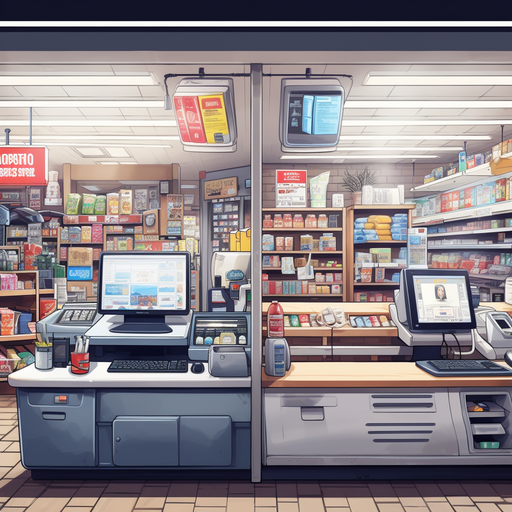
A side-by-side comparison of a cluttered versus a streamlined checkout process
"Keep It Simple, Stupid": The Power of Streamlined Navigation
The navigation of an e-commerce store can make or break the customer experience. If customers can't find what they're looking for quickly and easily, they're likely to become frustrated and abandon their shopping carts. This is why it's crucial for Shopify Plus merchants to focus on streamlined navigation as a key CRO strategy.
- Simplify Your Menu Structure:
One effective way to streamline navigation is to simplify the menu structure. This means reducing the number of menu items and categories, and grouping related products and services together. Ideally, customers should be able to find what they're looking for in just a few clicks, without having to navigate through multiple layers of menus. - Use Clear and Descriptive Labels:
Another important consideration is using clear and descriptive labels for menu items and categories. This means avoiding vague or generic labels like "Products" or "Services" and instead using more specific labels like "Men's Clothing" or "Pet Supplies". Clear labels not only make it easier for customers to find what they're looking for, but they also help improve SEO and search rankings. - Implement Search Functionality:
In addition to a simplified menu structure and clear labels, it's also important to implement search functionality on your e-commerce store. This allows customers to quickly search for specific products or services, without having to navigate through menus or categories. Make sure the search bar is prominently displayed on your site and that it provides accurate and relevant results.
Harnessing the Power of Social Proof: What Do Your Customers Have to Say?
Social proof is a powerful psychological phenomenon that can greatly influence consumer behavior. It's the idea that people are more likely to do something if they see others doing it first. In the context of e-commerce, social proof can be harnessed through customer reviews and testimonials.
Displaying customer reviews prominently on your Shopify Plus store is a great way to build trust and credibility with potential customers. Positive reviews can help overcome any doubts or objections customers may have about making a purchase. To maximize the impact of social proof, it is important to display a mix of positive and negative reviews. This can help increase authenticity and credibility, as customers are more likely to trust reviews that aren't all glowing.
Another way to harness the power of social proof is through user-generated content. This includes things like customer photos and videos, as well as social media posts and mentions. By encouraging customers to share their experiences with your products or services on social media, you can create a buzz and generate interest in your brand. This can also help attract new customers who may not have heard of your brand before.
In addition to customer reviews and user-generated content, Shopify Plus merchants can also leverage influencer marketing as a social proof strategy. By partnering with influencers who have a large following on social media, you can tap into their audience and reach new customers. Influencers can share their experiences with your products or services and provide endorsements that can help build trust and credibility with their followers.

A collage of customer reviews, testimonials, and social media shoutouts praising a Shopify Plus store
Creating Irresistible Offers: How Can You Sweeten the Deal?
In the world of e-commerce, competition is fierce. To stand out and attract customers, it's important to create irresistible offers that sweeten the deal and provide added value to shoppers. Here are some strategies for creating irresistible offers on your Shopify Plus store:
- 1. Bundles and Packages:
One effective way to sweeten the deal is by offering bundles or packages that combine multiple products or services at a discounted price. This can be a great way to incentivize customers to make a larger purchase and can also increase the perceived value of your products or services. For example, if you sell skincare products, you could create a bundle that includes a cleanser, toner, and moisturizer at a discounted price. - 2. Limited-Time Offers:
Another way to create urgency and entice customers to make a purchase is by offering limited-time offers. This could be a discount code that is only valid for a certain period of time, or a special offer that is only available to the first 100 customers who make a purchase. By creating a sense of scarcity, you can motivate customers to act quickly and make a purchase before the offer expires. - 3. Free Gifts and Samples:
People love getting something for free, so offering a free gift or sample with a purchase can be a great way to sweeten the deal and provide added value to customers. For example, if you sell makeup, you could offer a free lipstick or eyeshadow sample with every purchase. This not only provides added value to the customer, but it also gives them an opportunity to try out a new product and potentially make a future purchase.
A/B Testing: Are You Ready to Experiment Your Way to Success?
A/B testing is a powerful tool that can help you optimize your Shopify Plus store and boost conversion rates. By testing different variations of your website, you can identify what works best for your audience and make data-driven decisions to improve your site's performance. Here are some tips for conducting successful A/B tests:
- 1. Identify Your Goals:
Before you start testing, it's important to identify your goals and what you want to achieve. This could be anything from increasing sales to reducing bounce rates. By having a clear goal in mind, you can ensure that your tests are focused and meaningful.2. Test One Variable at a Time:
To get accurate results from your A/B tests, it's important to only test one variable at a time. This could be something like the color of a button or the placement of a call-to-action. By only changing one variable, you can ensure that any changes in performance are directly attributable to that variable. - 3. Analyze Your Results:
Once you've conducted your tests, it's important to analyze your results and draw meaningful insights from the data. Look for statistically significant differences in performance between your control group and your test group. This will help you identify what changes are likely to have the biggest impact on your site's performance.

A split-screen image demonstrating two different design variations being tested for CRO
In conclusion, optimizing your Shopify Plus store's conversion rate is crucial for maximizing revenue and ensuring long-term success. By implementing the strategies discussed in this blog post, you can create a seamless customer experience, build trust, and drive more sales. Stay ahead of the competition by continually testing and refining your CRO efforts, and watch your Shopify Plus store thrive.
Leveraging Data and Analytics for CRO on Shopify Plus
In this blog post, we explore how businesses can leverage data and analytics to optimize conversion rate optimization (CRO) on Shopify Plus, ultimately increasing sales and customer satisfaction.
Understanding the Importance of Data and Analytics for CRO
Data and analytics play a crucial role in conversion rate optimization (CRO). CRO is the process of increasing the percentage of website visitors who convert into customers or take a desired action on the website. Data and analytics provide insights into customer behavior, preferences, and pain points, allowing businesses to make data-driven decisions to optimize their website and improve the user experience. Without data, CRO efforts are based on assumptions and guesswork, which may not yield the desired results.
By collecting and analyzing data, businesses can identify areas of improvement on their website, such as pages with high bounce rates, low conversion rates, or long load times. They can also track user behavior, such as the pages they visit, the products they view, and the actions they take. This information can be used to optimize website design, content, and functionality to better meet the needs and expectations of visitors.
Furthermore, data and analytics can help businesses identify the most effective marketing channels and campaigns for driving traffic and conversions. By tracking conversion rates and revenue generated from different marketing channels, businesses can allocate their marketing budget to the most profitable channels and optimize their campaigns to improve performance.
In addition, data and analytics can provide insights into customer segmentation and targeting. By analyzing customer data, businesses can identify their most valuable customers, their preferences and behavior, and create targeted marketing campaigns to better reach and engage them.
How to Collect and Analyze Data on Shopify Plus?
Collecting and analyzing data on Shopify Plus is essential for optimizing your online store's performance. Shopify Plus offers a range of built-in analytics tools that businesses can use to track customer behavior, monitor sales performance, and analyze marketing campaigns.
One of the most important tools for data collection on Shopify Plus is Google Analytics. By integrating Google Analytics with your Shopify store, you can track website traffic, user behavior, and conversion rates. This information can be used to identify areas of improvement on the website and optimize the user experience to increase conversion rates.
Shopify Plus also offers a range of built-in reports that provide insights into sales performance, customer behavior, and more. These reports can be customized to suit your business needs and provide valuable insights into key metrics such as revenue, average order value, and customer lifetime value.
Another way to collect data on Shopify Plus is through customer feedback. By collecting feedback from customers through surveys, reviews, or social media, businesses can gain valuable insights into customer preferences, pain points, and expectations. This information can be used to optimize the website, improve product offerings, and enhance the overall customer experience.
Once data has been collected, it needs to be analyzed to identify patterns and trends. Shopify Plus offers a range of tools for data analysis, including custom reports and dashboards. These tools allow businesses to analyze key metrics and identify areas of improvement in real-time, allowing for quick and effective decision-making.
In addition, third-party analytics tools can be integrated with Shopify Plus to provide advanced insights and analysis. These tools can help businesses gain a deeper understanding of their audience and optimize their website and marketing campaigns accordingly.
Which Metrics Should You Focus on for CRO?
When it comes to Conversion Rate Optimization (CRO), it's essential to focus on the right metrics to achieve your business goals. Here are some key metrics to consider when optimizing your Shopify Plus store for conversions:
- 1. Conversion Rate (CR):
The conversion rate is the percentage of website visitors who complete a desired action, such as making a purchase or filling out a form. A high conversion rate indicates that your website is effective at converting visitors into customers. Tracking your conversion rate is essential to identify areas of improvement and measure the success of your CRO efforts. - 2. Average Order Value (AOV):
The average order value is the average amount of money spent by customers on your website per order. Increasing the AOV can help boost your revenue and profitability. By tracking AOV, you can identify opportunities to cross-sell or upsell products to customers and optimize your pricing and product offerings. - 3. Cart Abandonment Rate (CAR):
Cart abandonment rate is the percentage of website visitors who add items to their cart but do not complete the purchase. A high cart abandonment rate indicates that there may be issues with the checkout process, pricing, or product descriptions. By tracking and analyzing the cart abandonment rate, you can identify and address these issues and optimize the checkout process to improve conversion rates.Other metrics to consider when optimizing your Shopify Plus store for conversions include bounce rate, time on site, and customer lifetime value. It's important to focus on the metrics that are most relevant to your business goals and use them to guide your CRO efforts.
"You can't improve what you don't measure." – Peter Drucker
Peter Drucker's famous quote is particularly relevant when it comes to Conversion Rate Optimization (CRO). In order to make meaningful improvements to your website's conversion rate, you need to measure and analyze key metrics to identify areas of improvement. Without data and analytics, it's impossible to know whether your CRO efforts are having a positive impact on your business.
Measuring and analyzing data is essential to identify areas for improvement and optimize website performance. By tracking and analyzing key metrics such as conversion rate, average order value, and cart abandonment rate, businesses can gain valuable insights into customer behavior and preferences, and identify opportunities to improve the website's performance.
In addition to measuring key metrics, it's important to set goals for your CRO efforts and track progress towards those goals. This can help to keep your team focused on the most impactful changes and ensure that you're making progress towards your business objectives.
By measuring and analyzing data, businesses can make data-driven decisions and optimize their website to drive conversions and improve business performance. Whether you're just getting started with CRO or looking to take your efforts to the next level, data and analytics should be at the core of your strategy.
A/B Testing: The Key to CRO Success
A/B testing, also known as split testing, is a powerful tool for optimizing website performance and driving conversions. This testing method involves creating two versions of a webpage and testing them against each other to determine which version performs better. A/B testing is essential to CRO success because it allows businesses to make data-driven decisions and optimize their website for maximum performance.
- The Benefits of A/B Testing:
A/B testing provides a number of benefits for businesses looking to improve their website's performance. By testing different elements of a webpage, such as headlines, images, and calls-to-action, businesses can identify which elements are most effective and make data-driven decisions to optimize their website. A/B testing can also help businesses to reduce bounce rates, increase time on site, and ultimately drive more conversions. - Best Practices for A/B Testing:
To get the most out of A/B testing, it's important to follow best practices and guidelines. One key best practice is to test one element at a time. This ensures that you can accurately measure the impact of each change and identify which elements are driving the most significant improvements. It's also important to have a large enough sample size to ensure that your results are statistically significant. - Tools for A/B Testing:
While A/B testing can be done manually, there are a number of tools available to help businesses streamline the process and get more accurate results. Many website builders, such as Shopify Plus, offer built-in A/B testing tools that allow businesses to easily create and test different versions of their website. There are also a number of third-party A/B testing tools available that provide more advanced features and functionality.
Utilizing Third-Party Tools for Enhanced Insights
While Shopify Plus offers built-in analytics and reporting features, businesses can also benefit from utilizing third-party tools for enhanced insights. These tools can provide more advanced analytics, deeper insights, and more robust reporting capabilities.
One popular third-party tool for analytics and reporting is Google Analytics. This free tool provides businesses with a wealth of data on website performance, including traffic sources, user behavior, and conversion rates. By integrating Google Analytics with Shopify Plus, businesses can gain deeper insights into their website's performance and identify opportunities for optimization.
Another popular third-party tool is Hotjar, which offers a range of features for website optimization, including heatmaps, session recordings, and surveys. These features can help businesses to identify areas of their website that are causing frustration for users, and make data-driven decisions to improve the user experience.
For businesses looking to optimize their website for search engines, tools like SEMrush and Ahrefs can provide valuable insights into keyword rankings, backlinks, and other important SEO metrics. By utilizing these tools, businesses can identify opportunities to improve their website's search engine visibility and drive more organic traffic.
Finally, for businesses that are focused on social media marketing, tools like Hootsuite and Sprout Social can provide valuable insights into social media engagement, audience demographics, and other important metrics. These insights can help businesses to optimize their social media strategy and drive more engagement and conversions.
How to Continuously Optimize Your CRO Efforts?
Optimizing your CRO efforts is an ongoing process that requires constant monitoring and experimentation. Here are a few tips to help you continuously improve your CRO efforts on Shopify Plus:
1. Set up a regular testing schedule:
A/B testing is a critical component of CRO, and it's important to have a regular testing schedule in place. This can help you identify trends and make data-driven decisions about what changes to make to your website.
- 2. Continuously monitor website performance:
Keep a close eye on your website's performance metrics, such as conversion rates, bounce rates, and average order value. This will help you to identify areas of your website that need improvement and make data-driven decisions about how to optimize your website.3. Use customer feedback to inform your CRO efforts:
Customer feedback is a valuable source of information when it comes to CRO. Use surveys, feedback forms, and other tools to gather feedback from your customers and use this information to inform your CRO efforts. - 4. Keep up-to-date with industry trends:
The e-commerce industry is constantly evolving, and it's important to stay up-to-date with the latest trends and best practices. Attend industry events, read industry blogs, and network with other e-commerce professionals to stay informed. - 5. Utilize Shopify Plus' built-in features:
Shopify Plus offers a range of built-in features to help businesses optimize their website for conversions, including abandoned cart recovery, discount codes, and email marketing. Make sure you're taking advantage of these features to get the most out of your website.
By understanding and implementing data-driven CRO strategies on Shopify Plus, businesses can make informed decisions to improve their online store's performance, resulting in increased conversions, sales, and customer satisfaction.
Optimizing Product Pages on Shopify Plus: Techniques for Higher Conversion Rates
This blog post explores various techniques to optimize product pages on Shopify Plus to achieve higher conversion rates. Discover effective strategies that are essential for any e-commerce business looking to increase sales and improve customer satisfaction.
Understanding the Importance of an Attractive Product Page
In today’s digital age, having an online presence for your business is no longer an optional luxury – it’s a necessity. With a plethora of e-commerce platforms available, Shopify Plus is a popular choice for businesses looking to create an online store. However, just having a store is not enough – you need to optimize your product pages to drive higher conversion rates. A well-designed product page can make all the difference in whether a potential customer decides to make a purchase or not.
An attractive product page is one that is visually appealing, easy to navigate, and provides all the necessary information a customer needs to make an informed decision. It should be designed to showcase your products in the best possible light, highlighting their unique features and benefits. A well-designed product page can help build trust with your customers and increase the likelihood of them making a purchase.
One of the primary benefits of an attractive product page is that it can help reduce bounce rates. When a potential customer lands on your page, they make a split-second decision whether to stay or leave. If your page is unappealing or difficult to navigate, they are likely to leave without making a purchase. On the other hand, an attractive product page can capture their attention and encourage them to explore your products further.
Another benefit of an attractive product page is that it can help improve your search engine rankings. Search engines like Google prioritize well-designed pages that provide a positive user experience. By optimizing your product pages, you can increase the likelihood of them appearing higher in search results. This, in turn, can drive more traffic to your site and increase your chances of making a sale.
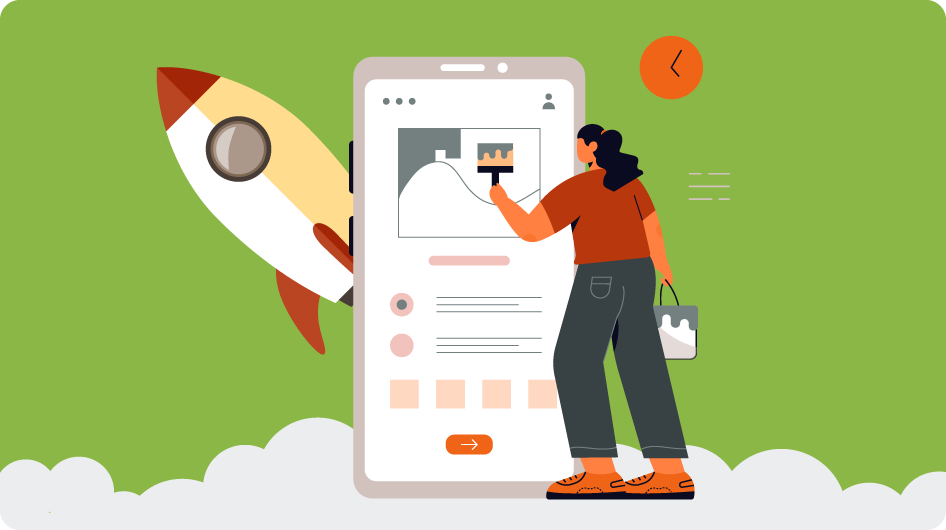
An infographic showcasing the key elements of an optimized product page.
Creating High-Quality Product Images: A Picture is Worth a Thousand Words?
When it comes to online shopping, product images play a crucial role in the decision-making process. After all, customers can’t physically touch or see the product in person, so they rely heavily on images to gauge its quality and appeal. That’s why it’s crucial to invest in high-quality product images that accurately depict your products and showcase them in the best possible light.
One of the key elements of creating high-quality product images is lighting. Poor lighting can make your products appear dull, unappealing, and lacking in detail. On the other hand, good lighting can highlight your product’s unique features and make it look more attractive to potential customers. Consider investing in professional lighting equipment or taking your product photos in natural light for optimal results.
Another essential element of creating high-quality product images is composition. Your images should be well-framed and showcase your products from different angles to provide a complete view. Consider including lifestyle shots that show your products in use, as this can help customers visualize themselves using the product and increase the likelihood of them making a purchase.
In addition to lighting and composition, it’s also crucial to invest in high-quality equipment. Using a high-resolution camera can help capture the details and nuances of your products, making them look more appealing to potential customers. Consider investing in a tripod or stabilizer to ensure your images are sharp and in focus.
Leveraging Social Proof: How Can Customer Reviews Influence Conversions?
Customer reviews are a powerful tool for increasing trust and credibility in your brand. When potential customers see positive reviews from others who have purchased and used your products, they are more likely to trust your brand and make a purchase. In fact, studies have shown that over 90% of consumers read online reviews before making a purchase decision.
One way to leverage customer reviews is by displaying them prominently on your product pages. Consider adding a section for reviews and ratings, along with a star rating system that allows customers to rate your products on a scale of one to five stars. This not only provides valuable social proof for potential customers but also allows you to gather feedback on your products and make improvements where necessary.
Another way to leverage customer reviews is by responding to them in a timely and thoughtful manner. When customers take the time to leave a review, it shows that they care about your brand and are invested in your products. By responding to their reviews, you can show that you value their feedback and are committed to providing excellent customer service.
Encouraging customers to leave reviews is another effective way to leverage social proof. Consider sending follow-up emails after a purchase asking customers to leave a review and providing a link to your review section. You can also incentivize customers to leave reviews by offering a discount or other reward.

A screenshot of a product page featuring customer reviews and star ratings.
Crafting Compelling Product Descriptions: How to Appeal to Your Target Audience?
When it comes to optimizing your product pages for higher conversion rates, crafting compelling product descriptions is key. Your product descriptions should not only accurately describe your product but also appeal to your target audience and highlight the unique value proposition of your brand.
- 1. Know Your Target Audience:
One of the most important steps in crafting compelling product descriptions is understanding your target audience. What are their pain points, needs, and desires? What language do they use to describe products like yours? By understanding your audience, you can craft product descriptions that resonate with them and highlight the benefits of your products that matter most to them. - 2. Highlight the Benefits:
In addition to describing the features of your products, it is important to highlight the benefits that your products provide. Why should someone buy your product? What problem does it solve, or what need does it fulfill? By focusing on the benefits, you can create a sense of urgency and motivate potential customers to make a purchase. - 3. Use Engaging Language:
Your product descriptions should be written in a way that is easy to understand and engaging to read. Use descriptive language that paints a picture of how your product can improve someone’s life. Use bullet points to break up long paragraphs and make it easy for potential customers to scan your product descriptions quickly.
Strategically Implementing Upsells and Cross-sells: Can They Enhance the Customer Experience?
Upselling and cross-selling are powerful techniques that can increase revenue and enhance the customer experience. By suggesting related products that complement the customer’s original purchase, you can increase the value of their order and provide them with additional solutions to their needs.
- 1. Make Relevant Suggestions:
To effectively implement upselling and cross-selling, it is important to suggest products that are relevant to the customer’s original purchase. For example, if a customer is purchasing a laptop, suggesting a laptop case or extra storage could be relevant and helpful. - 2. Don’t Be Pushy:
While upselling and cross-selling can be effective, it’s important not to be pushy or aggressive. Customers should feel like they’re receiving helpful suggestions, not being pressured into purchasing additional items they don’t need. - 3. Offer Discounts:
Offering discounts on related products can be a great way to incentivize customers to make additional purchases. For example, offering a discount on a laptop case when purchasing a laptop can encourage customers to add the case to their order. - 4. Simplify the Process:
To make upselling and cross-selling as seamless as possible, it is important to simplify the process. This can include providing product recommendations on the product page or during the checkout process, or even offering bundled packages that include related products at a discounted price. - 5. Measure the Results:
As with any marketing technique, it is important to measure the results of your upselling and cross-selling efforts. This can include tracking the number of upsells and cross-sells, as well as the revenue generated by these techniques. By analyzing this data, you can continuously improve and refine your upselling and cross-selling strategies.
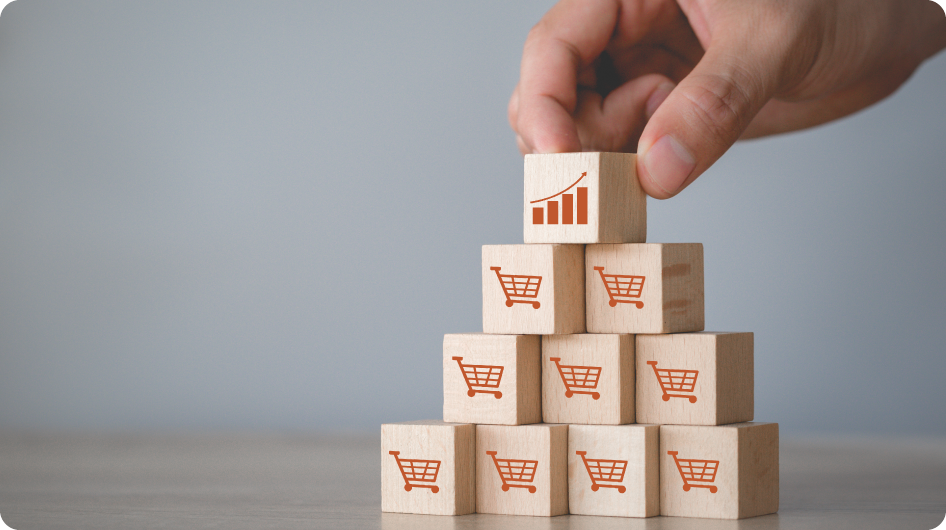
A visual representation of upselling and cross-selling techniques in action.
Mobile Optimization: Are You Reaching Your Full Potential?
With the increasing use of mobile devices for online shopping, it is crucial to ensure that your product pages are optimized for mobile users. Mobile optimization involves creating a user-friendly experience for customers who are browsing and making purchases on their smartphones or tablets. If your product pages aren’t optimized for mobile, you may be missing out on potential sales and frustrating customers who are trying to navigate your website on a small screen.
One key aspect of mobile optimization is ensuring that your website is responsive. This means that the website adapts to the size of the screen it’s being viewed on, so that customers can easily view and interact with your product pages on their mobile devices. A responsive website also ensures that your product pages are accessible to all customers, regardless of the device they’re using.
In addition to having a responsive website, it is important to simplify the checkout process for mobile users. This can include streamlining the checkout form, offering mobile payment options like Apple Pay or Google Wallet, and providing clear instructions for entering shipping and billing information. A seamless checkout experience can reduce cart abandonment and increase conversions for mobile users.
Another key aspect of mobile optimization is optimizing your product images and descriptions for mobile. This can include using high-quality images that load quickly on mobile devices, and formatting product descriptions so that they’re easy to read on a small screen. By optimizing your product pages for mobile, you can provide a positive user experience for customers and improve your chances of making a sale.
Utilizing Data Analytics to Continuously Improve Your Product Pages
Data analytics can be an incredibly powerful tool for optimizing your product pages and increasing conversions. By analyzing data on user behavior, traffic sources, and conversion rates, you can gain valuable insights into what’s working and what’s not on your product pages. These insights can help you make data-driven decisions about how to improve your product pages and maximize your sales potential.
One key area where data analytics can be useful is in identifying areas of your product pages that are causing friction for customers. For example, if you notice that a large percentage of customers are abandoning their carts on a particular page, you can use data analytics to investigate what might be causing the problem. By analyzing user behavior and tracking metrics like bounce rate and time on page, you can identify specific elements of the page that may be causing frustration or confusion for customers.
Another way that data analytics can be useful is in identifying opportunities for upsells and cross-sells. By tracking customer behavior and purchase history, you can identify products that are frequently purchased together, and use this information to strategically promote complementary products on your product pages. This can not only increase the value of each sale, but also help to improve the overall customer experience by providing relevant product recommendations.
Data analytics can also be used to track the effectiveness of different marketing channels and campaigns. By analyzing data on traffic sources and conversion rates, you can determine which channels are driving the most traffic and sales to your product pages. This can help you allocate your marketing budget more effectively and make data-driven decisions about which channels to focus on in the future.
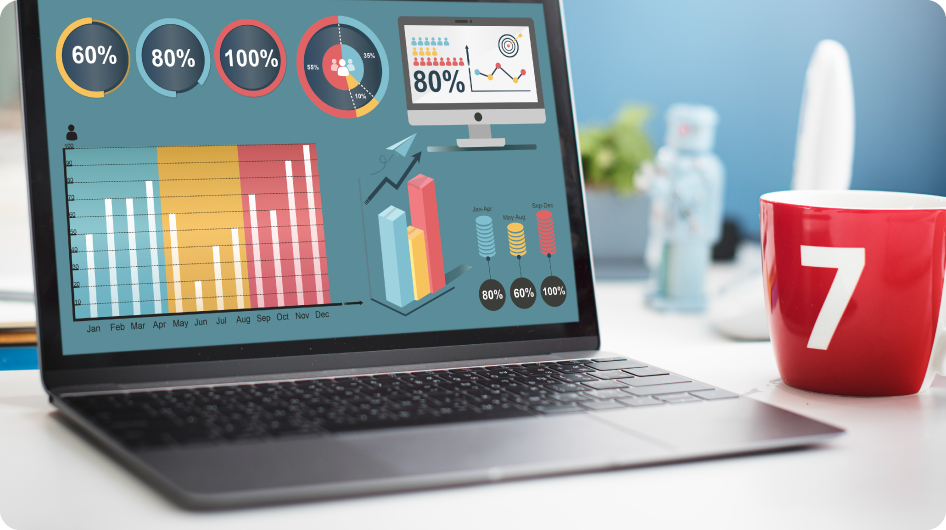
An analytics dashboard displaying important metrics for optimizing product pages.
In conclusion, optimizing product pages on Shopify Plus is crucial for achieving higher conversion rates. By implementing the techniques discussed in this blog post, e-commerce businesses can effectively enhance their customers’ experience, encourage repeat purchases, and ultimately boost sales.
Conversion Rate Optimization: 14 CRO Strategies in 2023
In this article, we explore 14 powerful Conversion Rate Optimization (CRO) strategies in 2023, providing businesses with the tools to boost online conversions and drive revenue growth.
Introduction: The Importance of Conversion Rate Optimization in 2023
As businesses continue to shift towards digital platforms, it’s becoming increasingly important to ensure that their online presence is optimized for conversions. Conversion rate optimization (CRO) is the process of improving the percentage of visitors to a website that convert into customers, and it’s an essential component of any successful digital marketing strategy. With the constant evolution of consumer behavior and technology, it’s crucial for businesses to stay up-to-date with the latest CRO strategies in order to maximize their online potential.
In 2023, CRO is more important than ever before. As the world becomes more digitally connected and consumers become more informed, businesses must adapt their marketing techniques to stay competitive. With the rise of e-commerce and the availability of information online, consumers have become more discerning with their purchasing decisions. This means that businesses must work harder to capture their attention and convince them to make a purchase.
One of the biggest advantages of CRO is that it allows businesses to improve their bottom line without increasing their marketing spend. By optimizing their website and improving their conversion rates, businesses can achieve more sales with the same amount of traffic. This means that CRO is a cost-effective way to boost revenue and increase profits.
However, CRO isn’t a one-size-fits-all solution. With so many different factors affecting consumer behavior, it’s important to take a strategic approach to optimization. By understanding the needs and motivations of their target audience, businesses can tailor their CRO efforts to achieve the best possible results. This requires a deep understanding of data analytics, user experience, and consumer psychology.

An illustration of a funnel depicting the conversion process
1. Targeted Personalization: How Can it Drive Conversions?
Personalization is a powerful tool for driving conversions. By tailoring their website content and messaging to the unique needs and preferences of each individual visitor, businesses can create a more engaging and relevant user experience. This can lead to increased engagement, loyalty, and ultimately, more sales.
One effective way to personalize a website is by using dynamic content. This involves changing the content of a webpage based on the visitor’s behavior, preferences, or location. For example, an e-commerce website might show different product recommendations to different visitors based on their purchase history or browsing behavior. This can increase the likelihood that a visitor will find something they’re interested in and make a purchase.
Another way to personalize a website is by using targeted messaging. This involves tailoring the language and tone of a website’s copy to the visitor’s demographic, location, or behavior. For example, a travel website might use language and imagery that’s specific to a certain region or country to appeal to visitors from that area. This can create a more personalized and engaging experience for the visitor, which can increase the likelihood that they’ll take the desired action.
Personalization can also be used to improve the user experience of a website. By making it easier for visitors to find what they’re looking for, businesses can reduce frustration and increase engagement. For example, a website might use a visitor’s location to automatically show them the nearest store or location. This can make it more convenient for the visitor to find what they’re looking for, which can increase the likelihood that they’ll make a purchase.
2. A/B Testing: What Makes This Technique Essential?
A/B testing, also known as split testing, is an essential technique for optimizing conversion rates. By testing different variations of a website or landing page, businesses can determine which version performs better in terms of achieving their desired goals. This can involve testing different headlines, images, calls-to-action, or other elements of the page.
One of the key benefits of A/B testing is that it allows businesses to make data-driven decisions about their website or landing page. Instead of relying on guesswork or intuition, A/B testing provides concrete evidence about what works and what doesn’t. This can help businesses make informed decisions about how to optimize their website for maximum conversions.
Another benefit of A/B testing is that it can help businesses identify areas for improvement. By testing different variations of a page, businesses can identify which elements are underperforming and need to be revised. This can help businesses make incremental improvements over time, leading to a more effective and efficient website or landing page.
A/B testing can also help businesses identify which traffic sources are most valuable. By testing different variations of a page for different traffic sources, businesses can determine which sources are driving the most conversions. This can help businesses allocate their marketing budget more effectively, focusing on the sources that are most likely to generate results.
Finally, A/B testing can help businesses stay competitive in a constantly evolving digital landscape. By testing different variations of their website or landing page, businesses can stay ahead of the curve and keep up with changing consumer behavior. This can help businesses maintain a competitive edge, leading to increased traffic, engagement, and ultimately, more conversions.
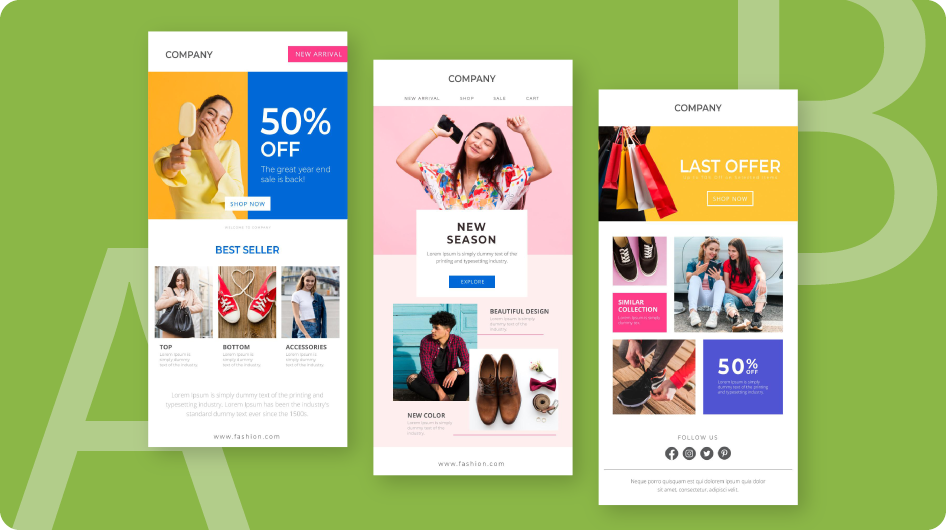
A split-screen image showing two different web design layouts
3. “Speed Matters”: The Impact of Website Performance on CRO
In today’s fast-paced digital world, website speed is more important than ever. Website performance can have a significant impact on conversion rates, with slow-loading pages often leading to high bounce rates and lost sales. Research has shown that even a one-second delay in page load time can result in a 7% decrease in conversions. This means that ensuring website speed is a crucial component of any successful CRO strategy.
There are several ways to improve website performance, including optimizing images, reducing file sizes, and using a content delivery network (CDN). By optimizing images and reducing file sizes, businesses can decrease the amount of time it takes for a page to load. A CDN can also help improve website speed by caching content and delivering it to users from a server that is geographically closer to them.
In addition to impacting conversion rates, website speed can also affect search engine rankings. Google has stated that website speed is a ranking factor, with faster-loading pages generally ranking higher in search results than slower-loading pages. This means that improving website speed can not only lead to increased conversions, but also increased visibility in search engines.
Mobile optimization is also critical for improving website speed and CRO. With more and more consumers accessing websites on their mobile devices, it is essential that businesses ensure their website is optimized for mobile. This includes using responsive design, optimizing images for mobile, and minimizing the use of large files or plugins that can slow down page load times.
4. Mobile Optimization: Are You Meeting Your Customers’ Needs?
Mobile optimization is essential for any business looking to improve their conversion rates. With more and more consumers using their mobile devices to browse and shop online, it’s crucial that businesses ensure their website is optimized for mobile. This includes using responsive design, optimizing images for mobile, and minimizing the use of large files or plugins that can slow down page load times.
One important aspect of mobile optimization is ensuring that the website is easy to navigate on a smaller screen. This means using larger font sizes, clear and concise headings, and avoiding cluttered layouts. Customers should be able to easily find what they’re looking for and complete their desired actions, such as making a purchase or filling out a form.
Another key component of mobile optimization is ensuring that the website is fast and responsive. Customers expect websites to load quickly on their mobile devices, and any delays or slow loading times can lead to frustration and lost sales. By optimizing images and reducing file sizes, businesses can improve website speed and provide a better user experience for their customers.
Mobile optimization also includes ensuring that the website is compatible with a range of different devices and screen sizes. With so many different types of mobile devices on the market, it’s crucial that businesses test their website on a variety of devices to ensure that it looks and performs well across the board.
In addition to improving conversion rates, mobile optimization can also have a positive impact on search engine rankings. Google has stated that mobile-friendliness is a ranking factor, with mobile-optimized websites generally ranking higher in search results than non-optimized sites. This means that businesses that invest in mobile optimization can not only improve their conversion rates but also increase their visibility in search engines.
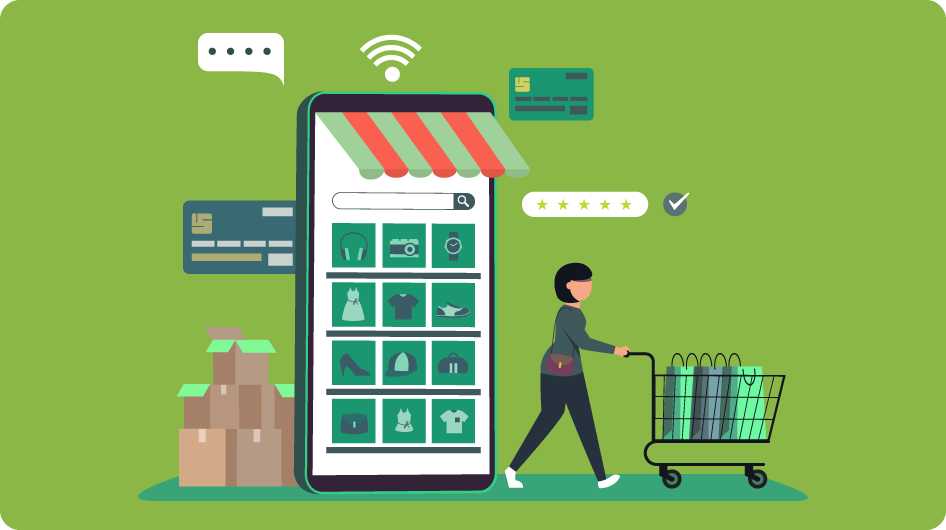
A mobile device displaying a user-friendly and responsive web design
5. The Power of Social Proof: How Does it Influence Decision-Making?
Social proof is a powerful tool that businesses can use to improve their conversion rates in 2023. Social proof refers to the influence that the actions and opinions of others have on our own behavior. In other words, when we see that other people have made a certain decision or taken a certain action, we are more likely to follow suit.
One of the most common forms of social proof is customer reviews and testimonials. By displaying positive reviews and testimonials on their website, businesses can demonstrate to potential customers that their products or services are high-quality and worth purchasing. This can help build trust and credibility with customers, and ultimately lead to increased conversion rates.
Another form of social proof is social media likes, comments, and shares. When customers see that a business’s social media posts are being liked and shared by others, they are more likely to engage with the business and consider making a purchase. This is because social media activity can serve as a form of validation, indicating that the business is reputable and trustworthy.
Celebrity endorsements are another form of social proof that can be effective in driving conversions. When a celebrity endorses a product or service, their fans and followers are more likely to take notice and consider making a purchase. This is because celebrities are often seen as influential and trustworthy figures, and their endorsement can serve as a form of validation for the product or service.
Conclusion: Maximizing Your CRO Potential in 2023
In conclusion, conversion rate optimization will continue to be a critical aspect of digital marketing in 2023. With the ever-increasing competition in the online marketplace, businesses must ensure that they are using the most effective CRO strategies to drive conversions and increase revenue. This includes tactics such as targeted personalization, A/B testing, website performance optimization, mobile optimization, and social proof.
To maximize their CRO potential in 2023, businesses should prioritize their customers’ needs and preferences, constantly testing and refining their website and marketing strategies to improve user experience and increase conversions. They should also stay up-to-date with the latest trends and technologies, such as AI and machine learning, to ensure that they are using the most cutting-edge and effective CRO tactics.
Furthermore, businesses should not overlook the importance of data analysis and measurement in their CRO efforts. By tracking and analyzing key metrics such as conversion rates, bounce rates, and customer behavior, businesses can identify areas for improvement and optimize their website and marketing strategies accordingly.

A rising graph representing improved conversion rates in 2023
Implementing these 14 CRO strategies will help businesses effectively optimize their conversion rates, resulting in increased profitability and customer satisfaction in 2023.
Proven eCommerce Customer Retention Strategies
This article explores proven eCommerce customer retention strategies, focusing on methods to keep customers engaged, satisfied, and loyal to your brand.
Introduction: The Importance of Customer Retention in eCommerce
In the world of eCommerce, customer retention is a crucial aspect of maintaining a successful business. While attracting new customers is important, retaining existing customers is equally essential. Retaining customers not only ensures a steady stream of revenue, but also helps build a loyal customer base that can promote your products through word-of-mouth marketing. In fact, studies have shown that the cost of acquiring a new customer is five times more expensive than retaining an existing one. Therefore, it is imperative that eCommerce businesses focus on customer retention strategies to increase their bottom line.
One of the primary reasons why customer retention is important in eCommerce is because it helps build long-term relationships with customers. By providing excellent customer service and personalized experiences, businesses can create a sense of loyalty and trust with their customers. This can lead to repeat purchases, increased customer lifetime value, and ultimately, a higher return on investment.
Furthermore, retaining customers also helps businesses reduce their marketing costs. Instead of constantly investing in new customer acquisition campaigns, businesses can focus on nurturing relationships with their existing customers. This can be achieved through targeted marketing campaigns, loyalty programs, and personalized offers based on their shopping history and preferences.
Another benefit of customer retention is that it allows businesses to gain valuable feedback from their customers. By listening to their feedback, businesses can identify areas for improvement and make necessary changes to their products or services. This not only helps retain existing customers, but also attracts new ones who are impressed by the company’s commitment to improving the customer experience.

An online shopper browsing through a personalized product recommendation section
Personalization: Catering to Individual Needs?
One of the most effective strategies for customer retention in eCommerce is personalization. Personalization involves tailoring the customer experience to meet individual needs and preferences. By using data such as purchase history, browsing behavior, and demographic information, businesses can create personalized offers and recommendations that are more likely to resonate with their customers.
Personalization can take many forms, including personalized emails, product recommendations, and targeted advertising. For example, a customer who has previously purchased running shoes may receive personalized emails with recommendations for new running gear or accessories. Similarly, a customer who frequently browses a certain category of products may see targeted ads for similar products on social media or other websites.
Personalization not only leads to increased customer satisfaction, but also helps businesses increase sales and revenue. According to a study by Epsilon, personalized emails have an open rate 29% higher than non-personalized emails. Additionally, a study by Segment found that 71% of consumers feel frustrated when their shopping experience is impersonal.
However, it is important for businesses to use personalization in a way that doesn’t come across as intrusive or creepy. Customers should feel that their privacy is being respected, and that their data is being used to enhance their experience, not exploit it. Therefore, it is important for businesses to be transparent about their data collection practices and to provide customers with options to control their data.
“Delight Your Customers”: The Power of Unexpected Rewards
One proven strategy for increasing customer retention in eCommerce is to “delight” your customers with unexpected rewards. This can take many forms, from surprise discounts and free gifts to personalized thank-you notes and exclusive access to new products. By going above and beyond what customers expect, businesses can create a positive emotional connection that makes customers more likely to return and recommend the brand to others.
- Surprise Discounts:
One way to delight customers is by offering surprise discounts or coupons. These can be sent via email or included in the packaging of a customer’s order. Not only does this make customers feel valued, but it also encourages them to make another purchase to take advantage of the discount. - Free Gifts:
Another way to delight customers is by offering free gifts with their purchase. This could be a sample of a new product, a small accessory that complements their purchase, or a branded item like a tote bag or water bottle. Not only does this create a positive association with the brand, but it also encourages customers to share their gift on social media and with their friends and family. - Personalized Thank-You Notes:
A simple yet effective way to delight customers is by including a personalized thank-you note with their order. This could be a handwritten message from the business owner or a pre-printed note that includes the customer’s name and order details. This shows customers that their purchase is appreciated and creates a more personal connection between the customer and the business. - Exclusive Access:
Finally, businesses can delight customers by offering exclusive access to new products or services. This could be in the form of early access to a new collection, a limited edition product, or an invitation to a special event. By making customers feel like they are part of an exclusive club, businesses can create a sense of loyalty and excitement that keeps customers coming back.

A happy customer surprised by an unexpected reward or discount
Leveraging Customer Feedback: Are You Truly Listening?
One of the most important aspects of customer retention in eCommerce is listening to and leveraging customer feedback. This feedback can come in many forms, from product reviews and social media comments to customer service interactions and surveys. By actively seeking out and addressing customer feedback, businesses can improve their products, services, and overall customer experience.
One key way to leverage customer feedback is to use it to improve product offerings. By analyzing customer reviews and feedback, businesses can identify patterns and trends in customer preferences and adjust their product offerings accordingly. This could include adding new products or features, improving existing products, or discontinuing products that are not well-received by customers.
In addition to improving products, businesses can also use customer feedback to improve their customer service. By monitoring customer service interactions and responding to customer complaints and concerns, businesses can show customers that they are valued and build trust and loyalty. This could include offering refunds or exchanges, providing additional support or resources, or simply apologizing for any inconvenience or frustration.
However, it’s not enough to simply collect customer feedback – businesses must also take action based on that feedback. This means actively seeking out feedback, acknowledging and responding to customer concerns, and making changes to products and services based on customer feedback. By doing so, businesses can show customers that their opinions are valued and that their feedback is being used to improve the overall customer experience.
Creating a Sense of Community: How Can Social Media Help?
In addition to leveraging customer feedback, creating a sense of community can also be an effective strategy for customer retention in eCommerce. By fostering a sense of belonging and connection among customers, businesses can build brand loyalty and encourage repeat purchases. Social media platforms are a powerful tool for creating this sense of community.
One way to use social media to create a sense of community is to encourage user-generated content. By asking customers to share photos, videos, or reviews of their purchases on social media, businesses can create a sense of community around their brand and products. This content can then be shared and reposted by the business, further amplifying the sense of community among customers.
Another way to use social media to build community is to create and participate in online discussions around topics related to the business or industry. By sharing insights, answering questions, and engaging with customers on social media, businesses can build relationships and create a sense of community among their followers.
Finally, businesses can also use social media to host events or promotions that encourage customer engagement and interaction. This could include live Q&A sessions, product giveaways, or virtual events that bring customers together around a shared interest or theme.

A group of customers engaging in a social media discussion about a brand or product
Investing in Customer Service: Is It Worth the Effort?
Providing exceptional customer service is a proven strategy for promoting customer retention in eCommerce. When customers have a positive experience with a business, they are more likely to return for future purchases and recommend the business to others. However, investing in customer service requires both time and resources, and some businesses may wonder if it’s worth the effort.
There are several ways that businesses can invest in customer service to promote customer retention. This could include offering multiple support channels, such as phone, email, and chat support, to accommodate customer preferences. It could also involve training customer service representatives to be knowledgeable, friendly, and responsive to customer needs.
Investing in customer service can also involve implementing self-service options, such as a comprehensive FAQ section or a knowledge base, to empower customers to find the information they need quickly and easily. This can reduce the need for customers to contact customer service with basic questions and free up resources to address more complex issues.
Despite the potential benefits of investing in customer service, some businesses may hesitate to allocate resources to this area. However, failing to invest in customer service can have negative consequences for customer retention and overall business success. Poor customer service can lead to negative reviews and word-of-mouth publicity, which can deter potential customers from making a purchase.
Conclusion: Putting It All Together for Increased Retention
In conclusion, there are several proven eCommerce customer retention strategies that businesses can implement to foster customer loyalty and drive long-term success. By personalizing the shopping experience, delighting customers with unexpected rewards, leveraging customer feedback, creating a sense of community, and investing in customer service, businesses can build a positive reputation and keep customers coming back for more.
It’s important to note that these strategies are not mutually exclusive, and businesses should aim to implement a combination of these tactics to achieve the best results. For example, a personalized shopping experience can be enhanced by leveraging customer feedback to tailor recommendations and promotions. Similarly, investing in customer service can help create a sense of community by providing a positive shopping experience that customers want to share with others.

An infographic summarizing the key customer retention strategies discussed in the article
Implementing these proven strategies will help eCommerce businesses increase customer retention, ultimately leading to higher revenues and long-term success.






